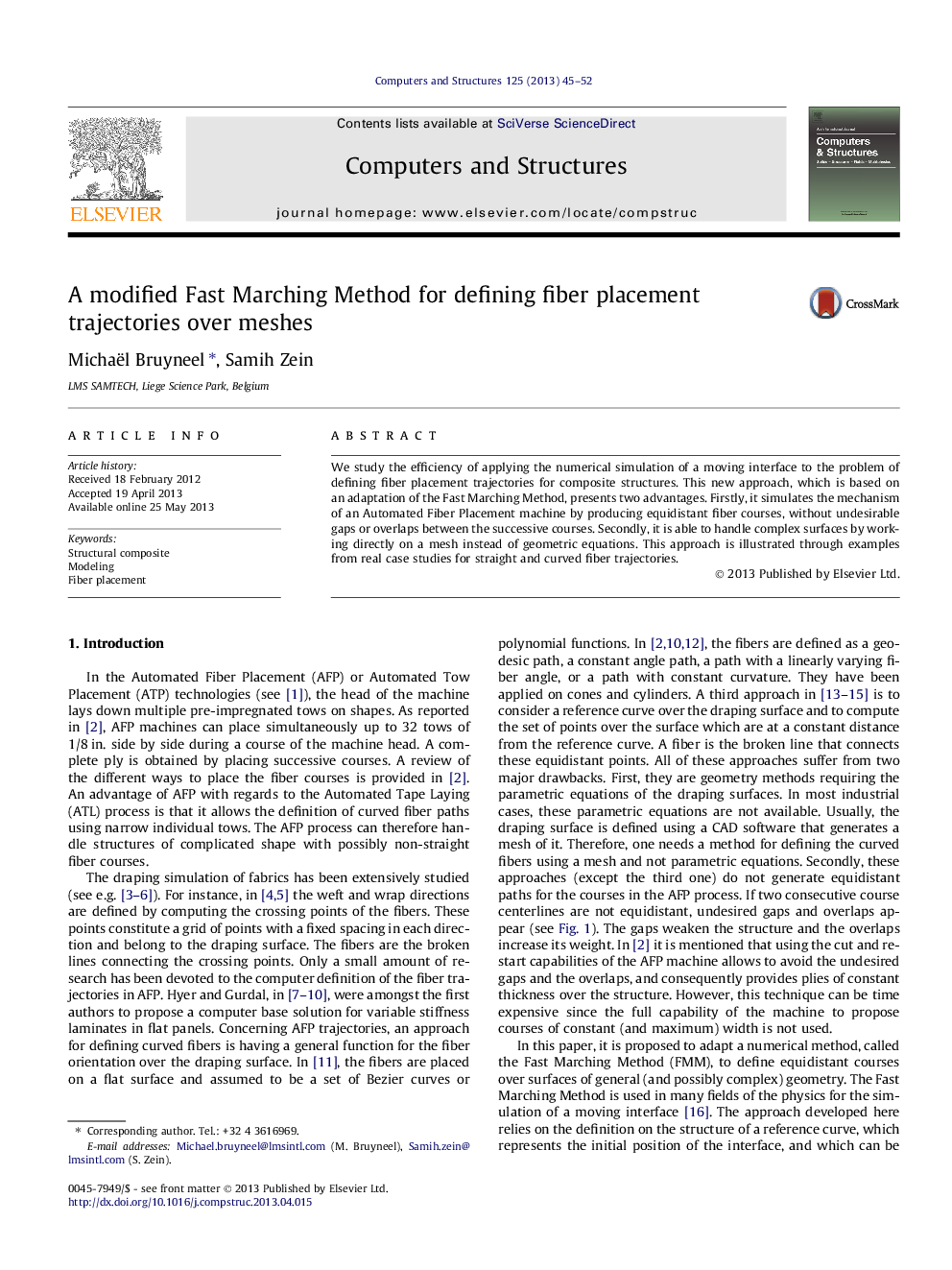| Article ID | Journal | Published Year | Pages | File Type |
|---|---|---|---|---|
| 510328 | Computers & Structures | 2013 | 8 Pages |
•We develop a new method for defining fiber trajectories for composite structures.•The new method can handle straight or curved fiber trajectories.•The resulting trajectories provide equidistant courses, with no gaps and no overlaps.•The method is based on an adaptation of the Fast Marching Method.•The method is not restricted to flat plates; it can be used on complex non-developable surfaces.
We study the efficiency of applying the numerical simulation of a moving interface to the problem of defining fiber placement trajectories for composite structures. This new approach, which is based on an adaptation of the Fast Marching Method, presents two advantages. Firstly, it simulates the mechanism of an Automated Fiber Placement machine by producing equidistant fiber courses, without undesirable gaps or overlaps between the successive courses. Secondly, it is able to handle complex surfaces by working directly on a mesh instead of geometric equations. This approach is illustrated through examples from real case studies for straight and curved fiber trajectories.
